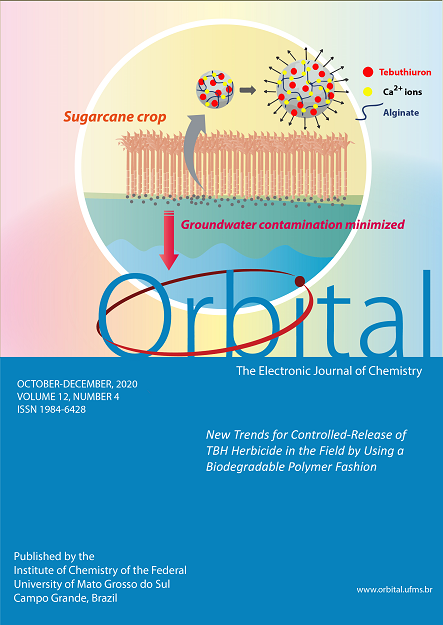New Trends for Controlled-Release of TBH Herbicide in the Field by Using a Biodegradable Polymer Fashion
- biodegradable polymer,
- field tests,
- microparticulate system,
- TBH weed control
Copyright (c) 2020 Orbital: The Electronic Journal of Chemistry

This work is licensed under a Creative Commons Attribution-NonCommercial-NoDerivatives 4.0 International License.
Abstract
The herbicide Tebuthiuron (TBH) is widely used to weed control in sugar cane and cotton crops. However, TBH when applied to the soil is prone to the leaching process due to its high solubility, reaching soil layers below the required control zone. Here, we present a new insight for controlled-release of TBH herbicide by using a microparticulate system on the weed plants of difficult control. For this purpose, calcium alginate (Ca-ALG) microparticles containing the TBH herbicide were developed as a strategy to reduce the groundwater contamination, caused by the mobility of the herbicide element. The obtained results are innovative since demonstrates potential application in controlled-release as well as efficiency on the weed species control of Digitaria horizontalis (Willd) and Ipomoea grandifolia (Dammer) O'Donell weed species in pre-emergence.

